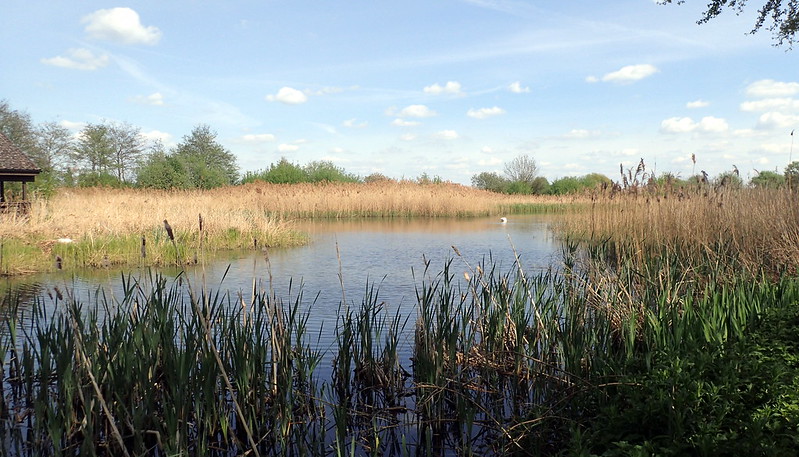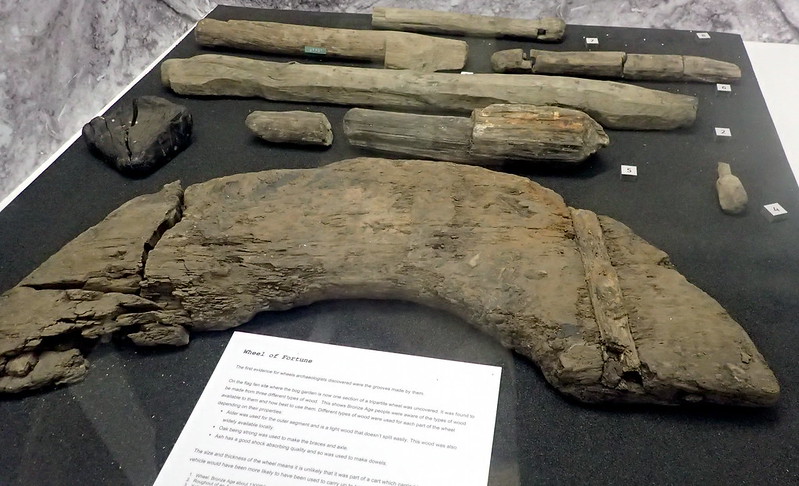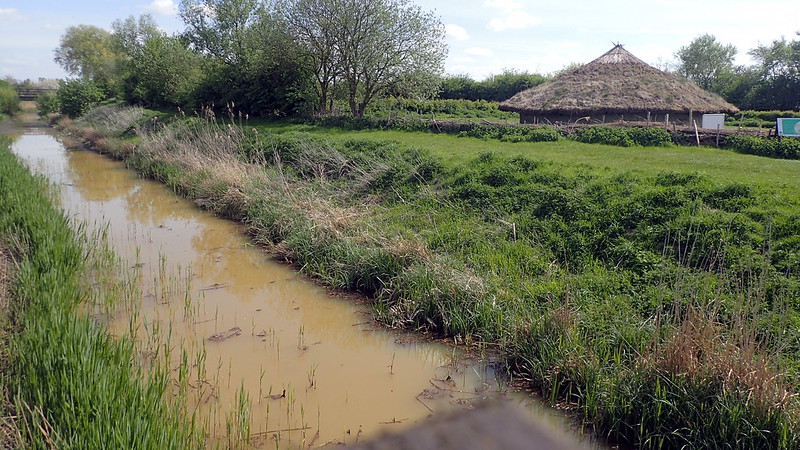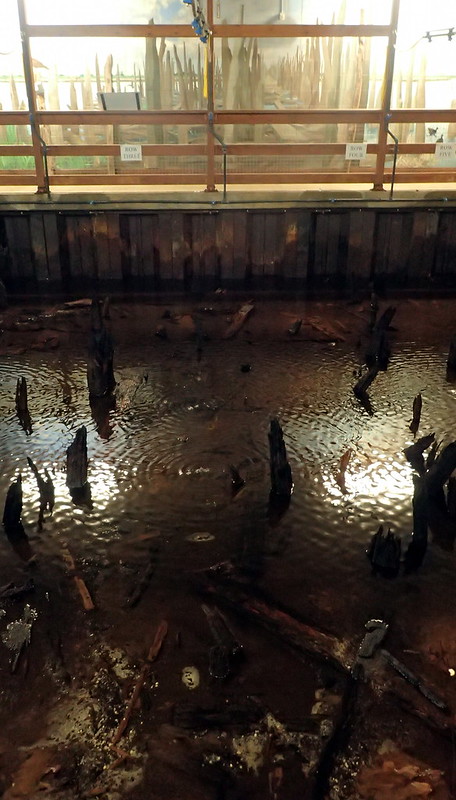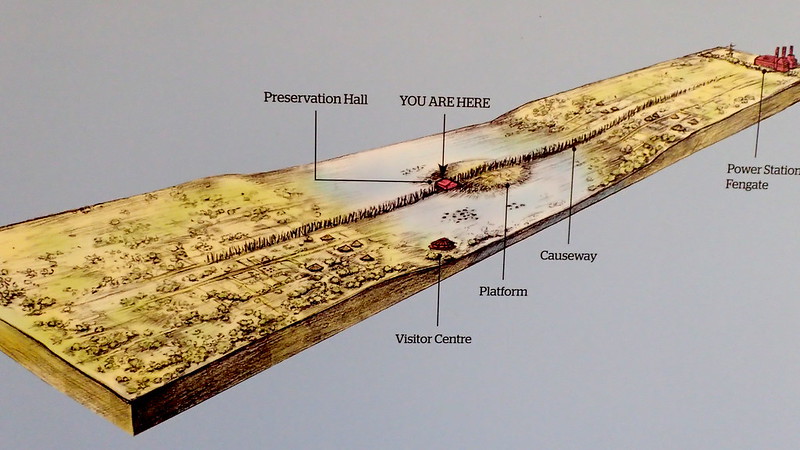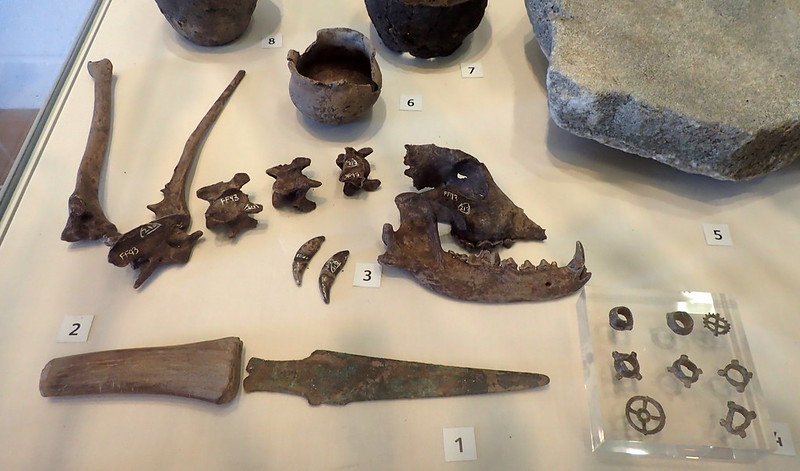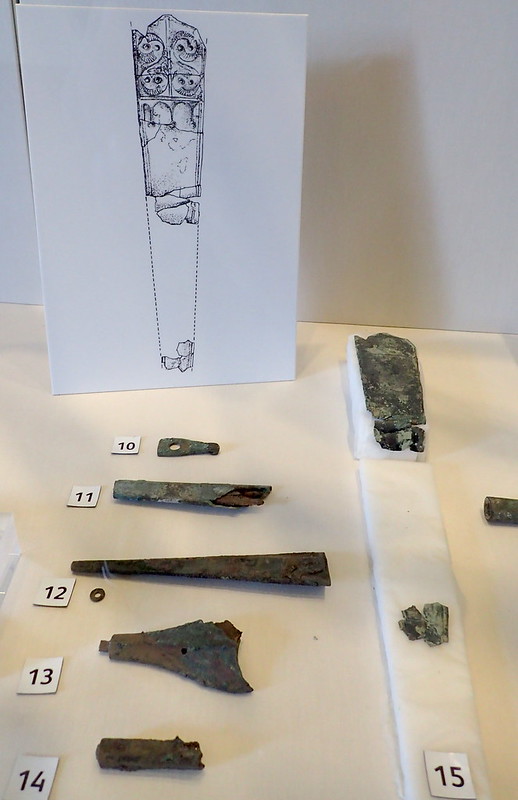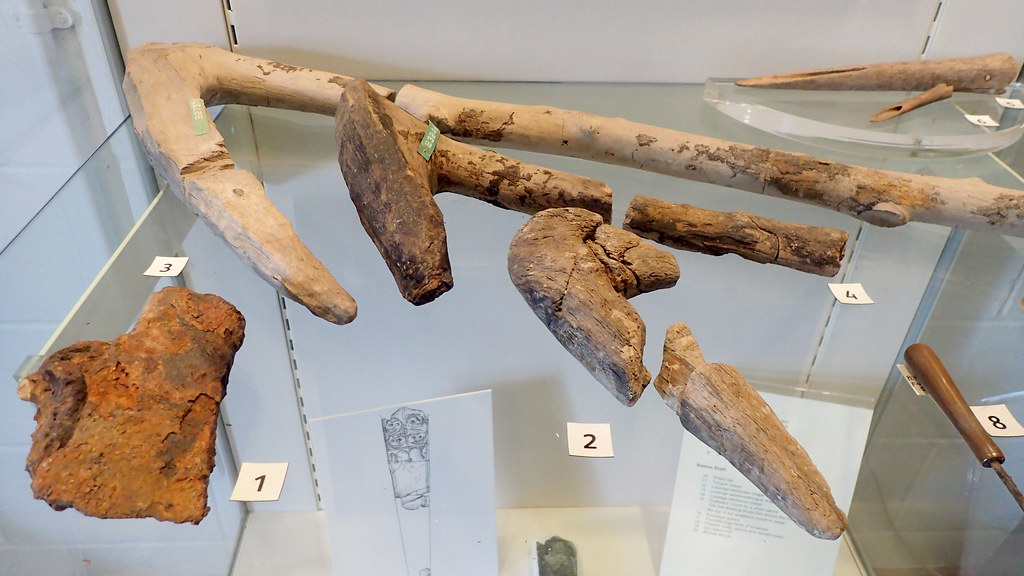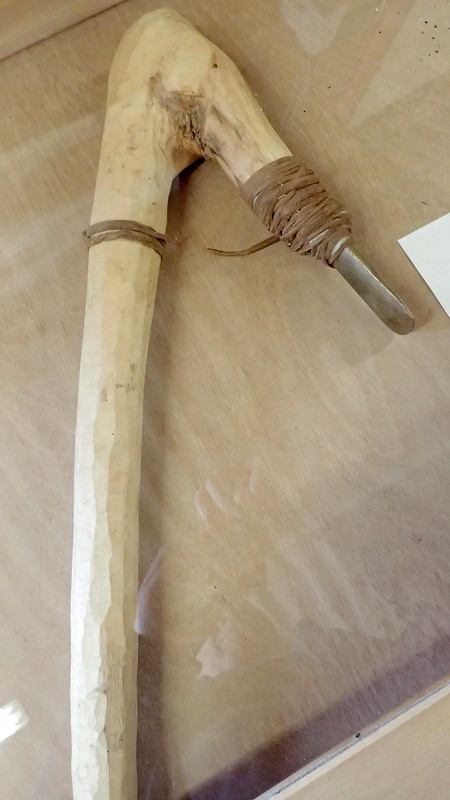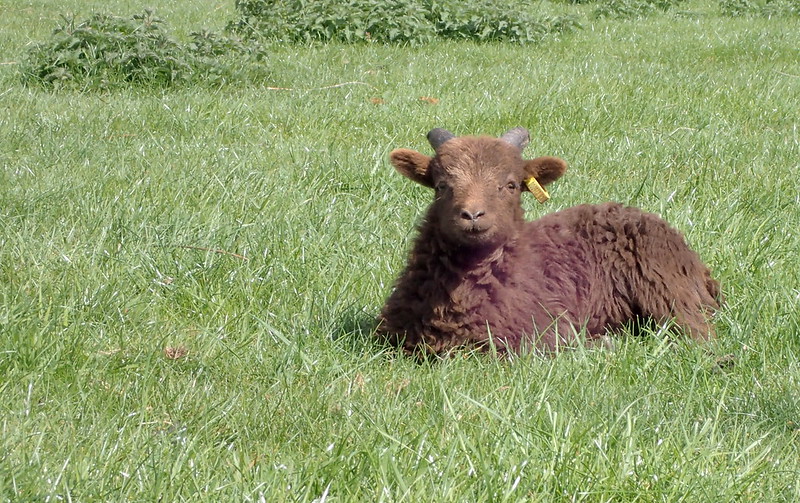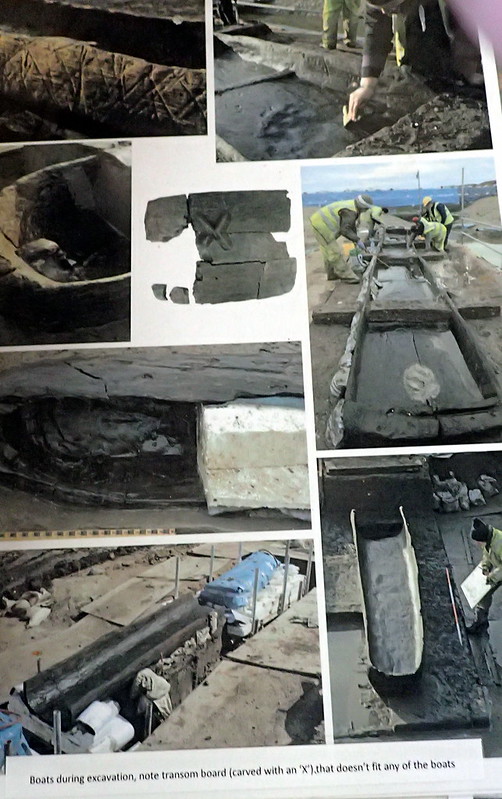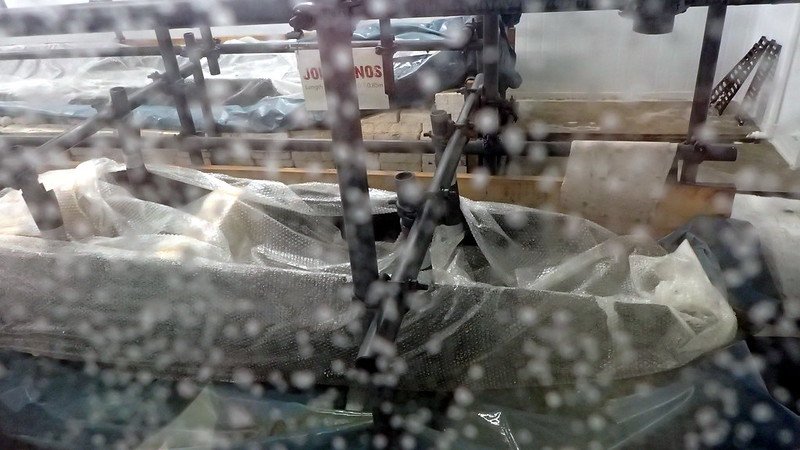
The Pontic Steppes, by Terpsichores [CC BY-SA 3.0], via Wikimedia Commons
I've previously dealt with my Ice Age hunter-gatherer ancestry, as indicated by DNA test result calculators, and with my Neolithic Farmer ancestry. That leaves the third major late prehistoric contributor to the Western European Genome. The most recent, and perhaps the most character defining - the Chalcolithic Steppe pastoralists or Yamnaya element.
My Yamnaya ancestors
Y-DNA haplogroup enthusiasts of European descent absolutely LOVE this one. This is because the majority of men of Europe have a Y haplogroup that arrived here from the Eurasian Steppes with this immigration wave. All of those R1a's and R1b's. My personal Y haplogroup didn't! But I'm a nonconformist with a nonconforming Y-DNA haplogroup. Populations such as the modern Irish men, on the western edge of Europe, can trace most of their R1b haplogroups to the Steppes! That some of of the earlier hunter-gatherer and Neolithic DNA here earlier still survives in most of us, suggests that this long migration consisted mainly of men. My mtDNA haplogroup though, as usual, is atypical - because H6a1 is one of the few maternal lineages in Europe that DOES also trace back in ancient DNA samples to the Yamnaya pastoralists. So, I DO have a Steppe haplogroup, only through my motherline.
The Eurasian Steppes have been a super highway of people, goods, culture, and genes, for thousands of years - linking Asia to Europe. A long, sometimes narrow corridor of natural grasslands. The wild ancestors of the domestic horse lived there. They had adapted to life in harsh environments such as this.
The Yamnaya themselves appear to have been admixed between different earlier Ice Age populations, including Caucasus Hunter-Foragers, East European Hunter-Gatherers, and the enigmatic Ancient North Eurasian Siberian ghost population, that were also among the ancestors of Native Americans.
One of the successes of the Steppe pastoralists, was that they embraced the horse. They rode their horses, enabling them to control larger herds of sheep, goats, horses, and cattle. That was one element of success. They also utilised the wheel, and built the first wagons and carts to be pulled by those horses and ox. This gave them a greater mobility, to move their livestock seasonally to further pastures. Biologically they were also adapting to a dairy based diet with lactose tolerance. Finally, they embraced the new metallurgy of copper, and then bronze working. The raw materials of this new technology shifted along the Steppes, and through their contact with many peoples, including with the new towns and kingdoms south of the Caucasus.
Another factor that needs to be considered, is that according to some scholars, they brought the Indo-European group of languages to Europe, which are ancestral to most European languages today.
Recent evidence has been produced that suggests that some of the pastoralists carried a plague virus, transmitted from a Central Asian origin. A new hypothesis is that they may have unintentionally passed this plague onto the Neolithic Europeans, weakening their populations and societies.
Whether this hypothesis ever substantiates or not, the archaeological and genetic evidence is that the Second Millennium BC saw many of these Steppe men (and my mtDNA ancestor) spill westwards into Copper Age Europe. After 2,900 BC, their arrival, and fusion with local populations and traditions may have inspired the Corded Ware Culture of Central and Eastern Europe. My mtDNA haplogroup H6a1a suddenly appears in Central Europe, associated with this culture.
These horsemen of bronze, or their descendants didn't stop the Westward advance. Within a few hundred years, they also dominated Western Europe. There, their arrival may have spawned another fusion culture - the Bell Beaker.
Above image, bell beaker burial exhibited in the British Museum.
My Bell Beaker Ancestors
The Maritime Bell Beaker Culture may have originated when these horsemen arrived in Iberia. When I was a keen amateur archaeologist and field walker, I'd feel a lot of contact with them. Many, if not the majority of the struck flints that I recorded in Thetford Forest were considered "bronze age". I would also survey the surviving round barrows in the forest, and look for unrecorded examples. I also spent a week with Suffolk archaeology, studying new aerial reconnaissance photographs, and helping to chart the soil and crop marks of long ploughed out barrows. I had no idea then, that this barrow burial tradition had actually been brought from the Steppes of Eurasia. Archaeology at the time didn't see the Bell Beaker as the arrival of people. They saw it as a cultural transference from Iberia. Genetics is now telling us differently.
A barbed and tanged flint arrowhead from one of my surveys. A classic Bell Beaker artifact.
The Maritime Bell Beaker Culture of the Early Bronze Age appears to have gradually evolved by the beginning of the Iron Age, into what we traditionally call the Atlantic Seaboard Celtic Culture, so strong in places such as Ireland and Scotland. Yet, most Irishmen carry the Y haplogroup R1b SNPs such as L21. A recent Irish DNA Study revealed that they found the modern Irish not only a fairly homogeneous population, but that it had its roots, particularly on male haplogroups, firmly in the Pontic and Caspian Steppes of what is now Ukraine and Southern Russia. They also studied the DNA from remains of Bronze Age, and the earlier Neolithic people that lived in Ireland, and pronounced them to have had different origins. The earlier, Neolithic Irish largely descended from population that originated in SW Asia.
http://www.pnas.org/content/113/2/368.full
Here in Britain also, the majority of men carry R1b Y-DNA. I have a Steppe mtDNA haplogroup from my mother. Additionally autosomal DNA calculators suggest that maybe circa 30% of my Copper Age ancestors were Steppe. However, where did my Steppe ancestry come in? The obvious would be from British Celts - but that is an unsafe assumption. My recorded ancestry is totally SE English, and strongly East Anglian. My autosomal DNA "flavour" though is atypical for a Brit, and is unusually Continental, with a tertiary pull from Southern Europe, that I can't explain. If many of my ancestors two thousand years ago actually lived outside of the British Isles, most likely on the Continent, then they could have inherited much of this Steppe there.
Image above. A local round barrow burial mound hidden in Thetford Forest.
Ultimately of course, I know where maybe a third of my ancestors lived 4,000 years ago. They were pastoralists on the windy Pontic Steppes, looking to the west, and wandering, what opportunities lay there?
My Ancient DNA Calculators
David Wesolowski's K7 Basal-rich test
Ancient North Eurasian
Another Ice Age hunter-gatherer "Ghost" population, but this one has been associated with human remains and an Upper Palaeolithic culture (Mal'ta-Buret') at Lake Baikal, Siberia. We know that it significantly contributes to modern West Eurasians, through earlier admixture on the Eurasian Steppes. Copper Age pastoralists then carried it westwards into Europe with their later expansion.
David gives the English average as 16.6%. My result is 14.0%
Global 10 Test
The recent Global 10 test, run by my friend Helgenes50 of the Anthrogenica board, resulted in:
- 38% Yamna_Samara (Eurasian Steppe Pastoralist)
FT-DNA My Ancient Origins
My MDLP K16 Modern Admixture
- 22% Steppe (sourced from ancient genome of European Bronze Age pastoralists)
- 22% Caucasian (derived from genomes of mesolithic Caucasian Hunter-gatherers)
My MDLP Modern K11 Oracle:
Closest Genetic Distances:
Using 1 population approximation:
1 British_Celtic @ 6.948432
2 Bell_Beaker_Germany @ 8.143357
3 Alberstedt_LN @ 8.426399
4 British_IronAge @ 9.027687
5 Halberstadt_LBA @ 10.273615
6 Bell_Beaker_Czech @ 12.190828
7 Hungary_BA @ 12.297826
8 Nordic_MN_B @ 12.959966
9 British_AngloSaxon @ 12.993559
10 Nordic_BA @ 13.170285





























